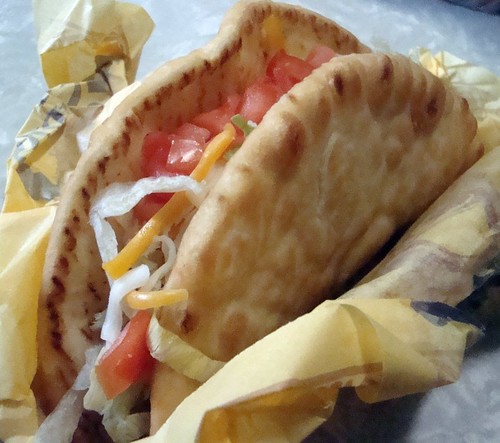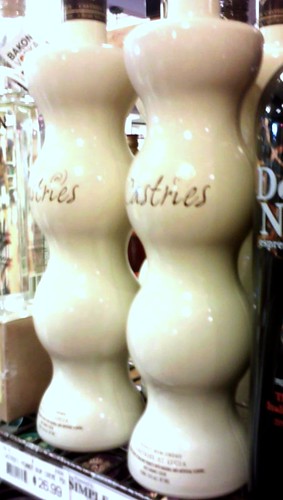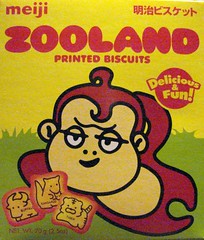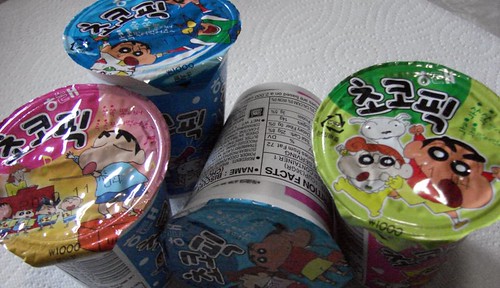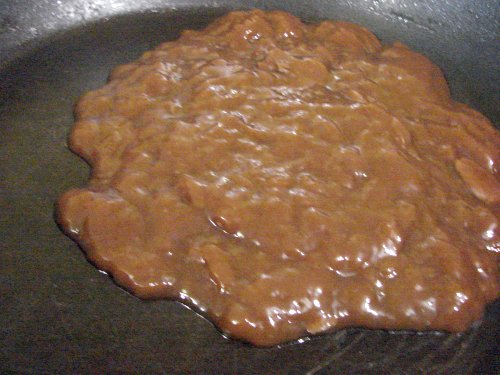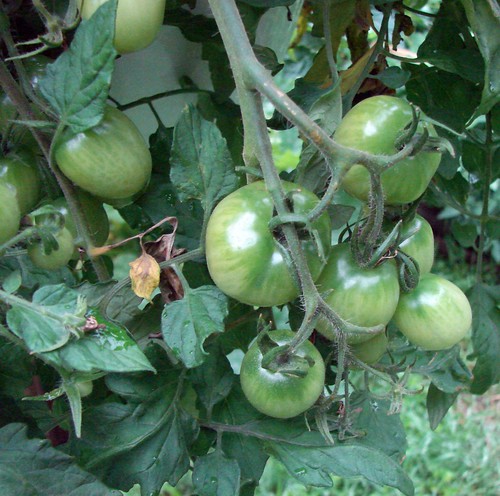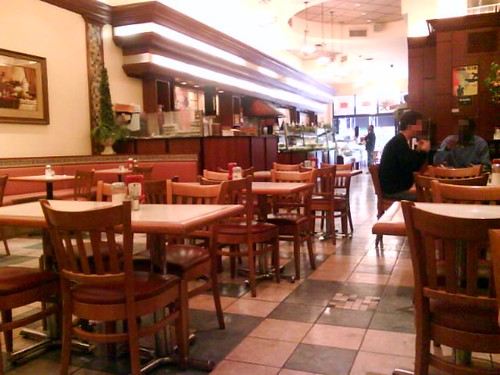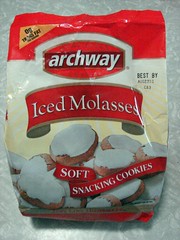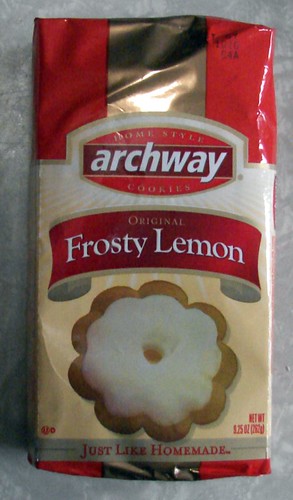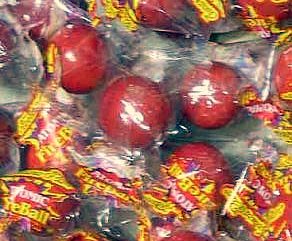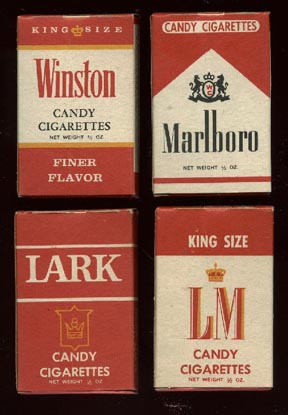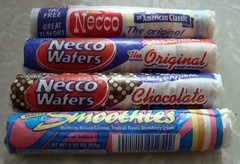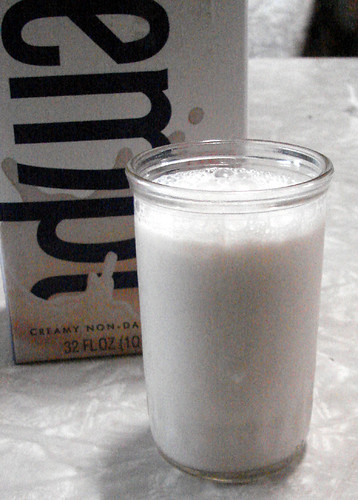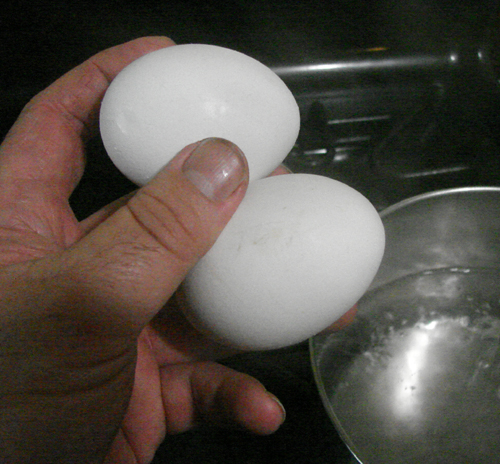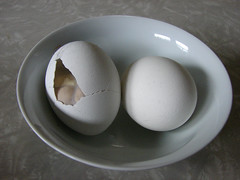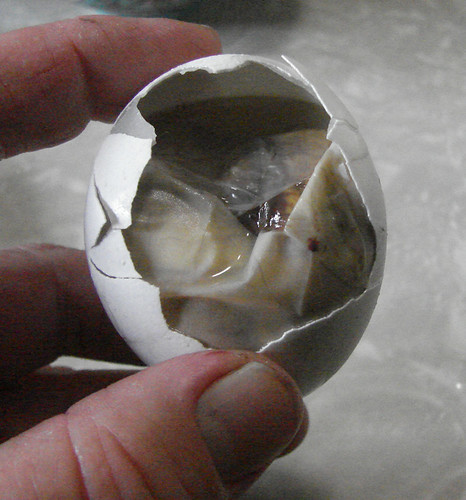So, last weekend I finally got up the courage to try balut, which is the Filipino name for an embryonic duck cooked in the shell and served warm. They're quite a popular "street food" in the Phillippines, where they are sold just about everywhere, and they are equally popular in Vietnam, where they're called hot vit lon and considered quite a delicacy.
My snack began at A. Dong Supermarket in West Hartford CT - the largest and most fully-stocked Asian market in the area. In the main aisle in front of the cash registers, there is always a case of what they call "Baby Duck Eggs." Lynnafred and I were there Saturday, and on the way out I bought two duck eggs. Lynnafred made a gagging noise. "You're going to make balut, aren't you? I don't want to be anywhere near the kitchen when you start that shit."
The next morning I brought a pot of water up to a full rolling boil and eased the eggs into the boiling water. As I expected, they bobbed around at the top of the pot when they went in - after all, these eggs were "past their prime" for omelets.
Instructions I found on the web mentioned that I should cook the eggs for 20 to 30 minutes. I set the timer for 20 minutes and moved on to other cooking duties, making breakfast for Maryanne and Lynnafred.
When the timer went off, I removed the eggs with a slotted spoon and set them in a small bowl to cool a bit. But I couldn't quite wait to see what they looked like inside, so I tapped the side of one of the eggs and took a peek. Hmm. Couldn't see much - just the inner membrane pulled over a kind of lumpy-looking yellowness inside. Not very unusual looking, really. I set them aside to cool while the rest of the family finished their standard sausage-and-egg breakfast.
When they were cool enough to handle (but still warm) I peeled off some more of the shell and then carefully tore open the inner membrane to "open" the egg. I took a sniff. It smelled - and tasted - like strong chicken broth that had simmered for hours. Quite delicious, though I admit the glimpse of what was hiding within the egg unsettled me a bit...
I peeled the remainder of the egg and took a look at my delicate tidbit. This is where cultural conditioning took over and I started to have second thoughts. North Americans tend to think of developing eggs as "chicks," "babies," or "peeps," not as a munchie to be casually NOMmed with a beer. Lynnafred, as promised, left the kitchen when I first started cracking open the shell, but Maryanne had stuck it out up to this point. She took a look at the yellow and white lump in my hand and said, "Eugggh. That is really...eeww. Sorry, I can't stay in here any longer."
The grey area at the top of the egg is the neck and head of the developing chick - the fine grey lines are actually partially-developed feathers. The round white bump on the upper right is the eye socket of the head. From this angle, you can't see the tiny wing folded against the body. As I bit my way through the egg, I did find identifiable duck parts - wings, legs, feet, and so on. The "innards" were cooked pretty uniformly throughout; they looked and tasted like chicken liver. The yellow parts - formerly the yolk of the egg - was solid and rather waxy, reminding me a little of lobster roe (but without the oceanic taste or crumbly texture.)
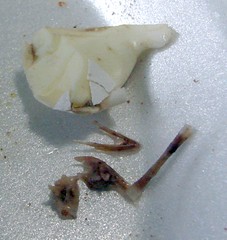
Overall, the flavor was quite good - very much like strongly-flavored liver paté. The only unsettling parts - other than the looks - were some of the textures. The rib cage of the chick was fairly well-developed and, although the bones were soft, had a kind of "bristly" texture that I found a little unsettling. There were, though, only three parts that proved more or less inedible. In the picture at left, top to bottom:
Eggwhite - as hard as a rubber eraser and just as difficult to bite and chew. I did take a bite out of it, as you can see in the picture. I've discovered that many regular balut eaters don't really care for the whites, and I understand why.
The "wishbone" - That V-shaped bone in the center of the photo. It was sharp at the ends and very hard.
The beak - Those two nubby-looking things at the bottom of the picture are the beak. They were also well-developed, hard, and sharp - especially the "egg tooth" on the top surface of the upper beak.
And then there was that last unidentified bone in there, which was also kind of strange and stabby. But there was only one of them, which makes me think that I just encountered it at an unfortunate angle and ate the other one without realizing it.
I liked it. And I'd do it again.
.



